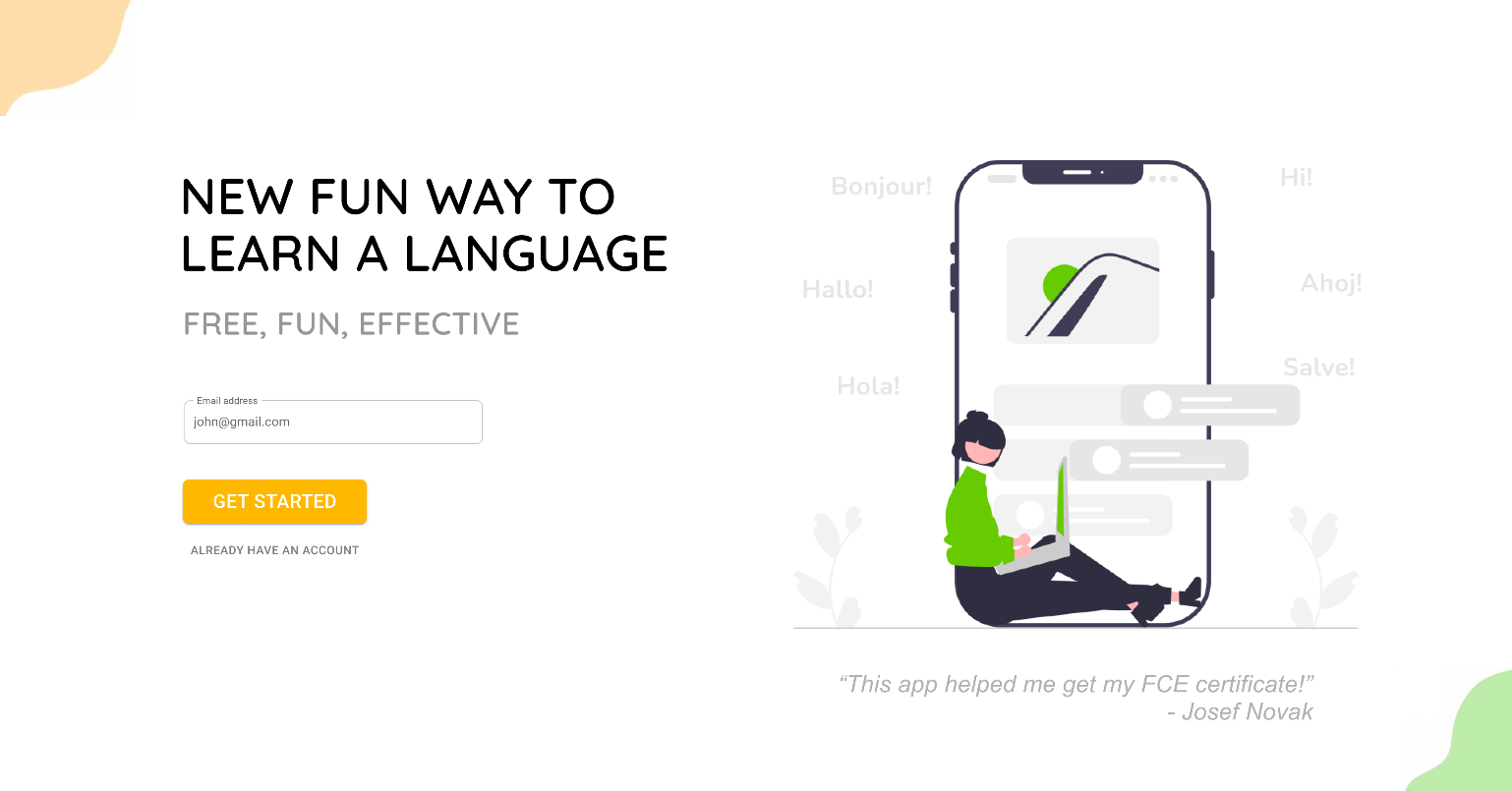📋 Shrnutí
Tato webová aplikace na výuku angličtiny je doposud největším projektem, který jsem z nuly vybudoval. Aplikace začala jako můj vedlejší projekt a postupně se rozvinula v mezinárodní webovou aplikaci zaměřenou na efektivní a zábavné učení jazyků. Původně jsem byl zodpovědný za vývoj backendu i frontendu, kde jsem pracoval s technologiemi React, Redux, JavaScript, Node.js a NoSQL databází Firestore.
Po vydání Alpha verze a dosažení prvních 100 uživatelů se k týmu přidali další 2 vývojáři a já se tak přesunul do manažerské role. Aplikace se rozšířila z výuky slovní zásoby a gramatiky na všechny aspekty jazykového vzdělávání, včetně čtení, poslechu, výslovnosti a interaktivního mluvení.
Během vývoje projektu jsem získal bohaté zkušenosti o vývoji webových aplikací. Po tom, co projekt začal nabírat větší rozměry, jsme zavedli nové standardy kvality kódu. Začali jsme používat TypeScript, Next.js a .NET. Také jsme začali věnovat více pozornosti uživatelské zkušenosti díky UX výzkumům a detailnímu designu v nástrojích Figma a Storybook.
Díky chybám a výzvám, které jsme překonali, mě tento projekt naučil mnoho důležitých informací a dovedností z oboru softwarového inženýrství. Aplikaci neustále rozšiřujeme a pomáháme tak uživatelům se zdokonalovat v jejich angličtině.
💻 Použité technologie
- .NET, SQL
- Next.js
- TypeScript
- Figma
- Storybook
- Azure
Dříve také:
- React, Redux
- JavaScript
- NoSQL
- Node.js
- Google Cloud Platform, zejména Firebase a Firestore
🖼️ Ukázky


